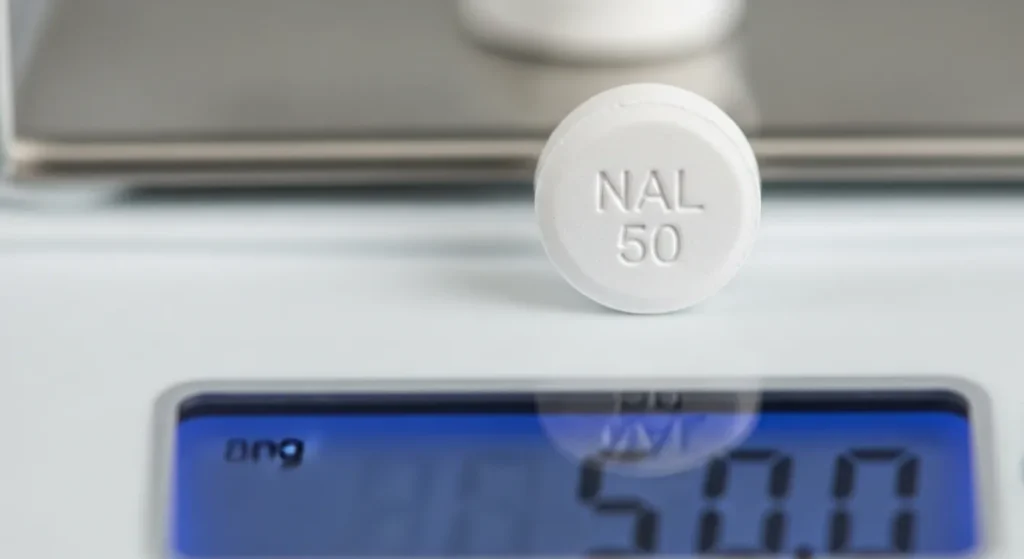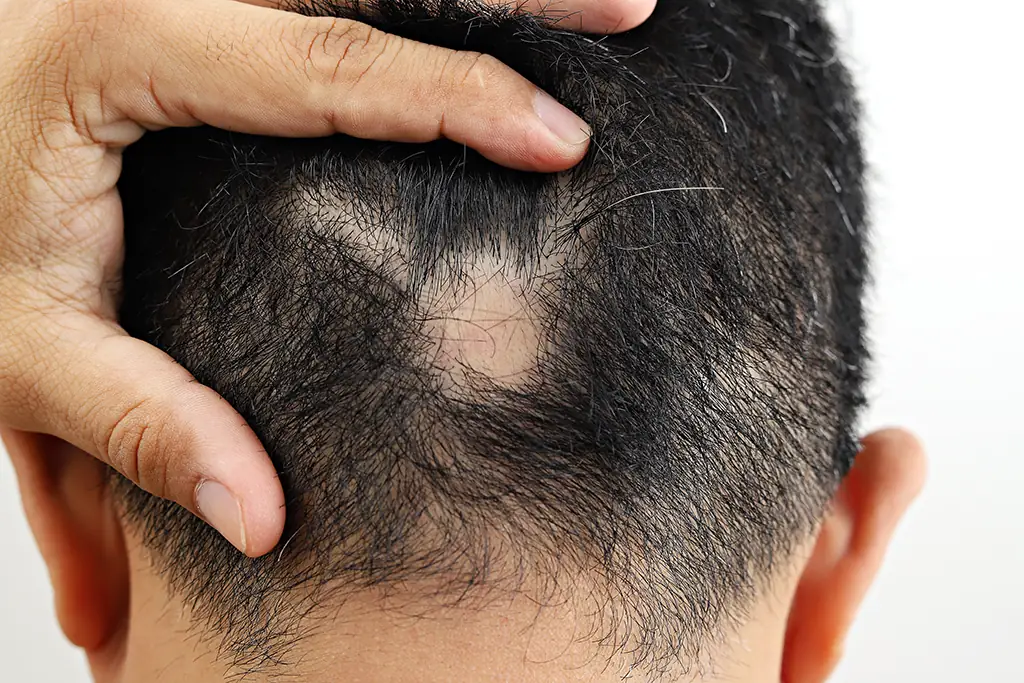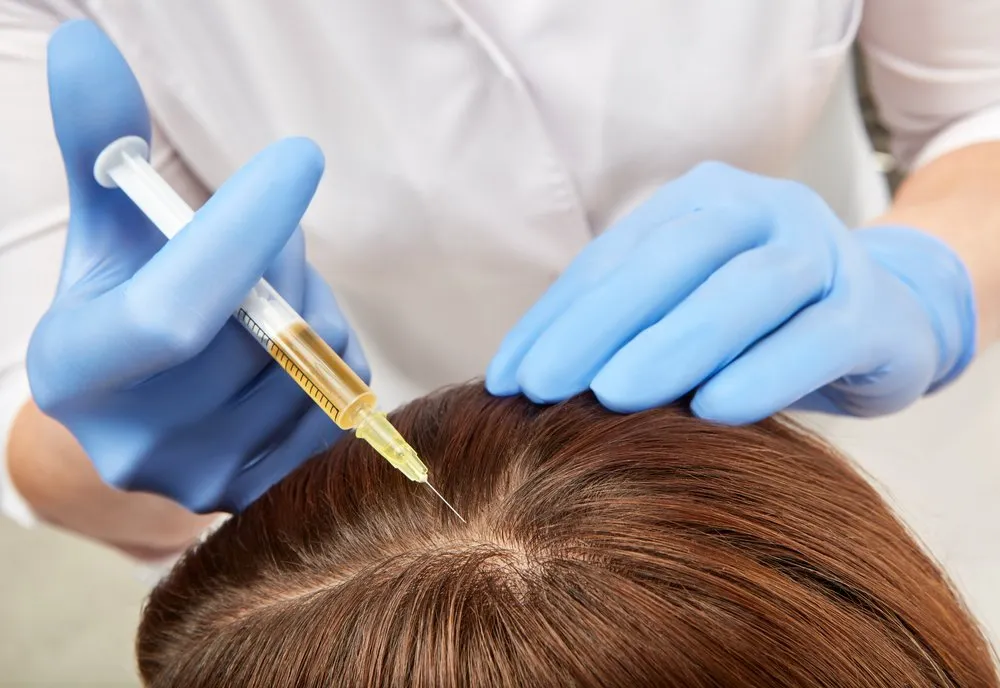Are you researching naltrexone hair loss because you’re worried it may be thinning your hair or wondering if it could help with regrowth?
In this article, we explain what medical research and dermatologists say about low-dose naltrexone (LDN), its side effects, and its surprising potential in treating certain hair conditions.
You’ll learn the latest evidence, patient experiences, safe use guidelines, and how it compares with standard hair loss treatments.
What Is Naltrexone—and What Is Low-Dose Naltrexone (LDN)?

Naltrexone is a medication originally approved in the 1980s to treat opioid and alcohol dependence. At standard doses (50 mg and higher), it blocks opioid receptors in the brain to reduce cravings.
Medical Uses of Standard-Dose Naltrexone
- Addiction treatment – opioid and alcohol use disorder
- Weight loss – in combination with bupropion (as Contrave)
- Relapse prevention – after detoxification programs
Off-label Emergence of LDN
In much smaller doses (typically 1–5 mg daily), researchers discovered that naltrexone has immune-modulating and anti-inflammatory properties. This “low-dose naltrexone” (LDN) is being studied for autoimmune and inflammatory conditions such as:
- Multiple sclerosis
- Fibromyalgia
- Crohn’s disease
- Psoriasis
- Alopecia areata and scarring alopecias
Evidence on LDN and Hair Loss—Can It Cause Hair Thinning?
One of the most common patient questions is whether LDN can trigger hair loss.
Expert Assessment
According to dermatologists and clinical reports, LDN is not generally known to cause hair loss. Most side effects are mild, such as vivid dreams, headaches, or digestive discomfort. Shedding, if reported, is often due to other underlying factors like hormonal changes, stress, or thyroid dysfunction.
Anecdotal Reports
On forums like Reddit, some users have shared mixed experiences. A few noted increased shedding while on LDN, while others observed stabilization or regrowth. These differences suggest that individual responses may vary.
Dermatologist Viewpoints
Hair loss has many causes nutritional deficiencies, stress, autoimmune disorders, and medication side effects. A dermatologist’s evaluation is essential to determine whether shedding is linked to LDN or another factor.
LDN as a Potential Treatment for Hair Loss—What the Research Shows
While LDN rarely causes shedding, researchers are actively studying its role as a treatment for hair loss.
Alopecia Areata & Immune-Mediated Hair Loss

- A systematic review published in dermatology journals suggests that LDN may help in alopecia areata, an autoimmune condition that causes patchy hair loss.
- LDN’s ability to regulate immune activity and reduce inflammation makes it a promising option in difficult-to-treat cases.
Scarring Alopecias: FFA & LPP
Low-dose naltrexone has been tested in frontal fibrosing alopecia (FFA) and lichen planopilaris (LPP)—two scarring alopecias where traditional treatments often fail.
- Case reports have shown slowed disease progression and even regrowth in scarred patches when LDN was combined with therapies like platelet-rich plasma (PRP).
Clinical Trials & Ongoing Research
ClinicalTrials.gov currently lists studies exploring LDN’s impact on autoimmune and inflammatory hair loss conditions. While the results are early, the scientific interest is growing rapidly.
Mechanism of Action
LDN works differently from conventional hair loss drugs.
- Anti-inflammatory effects via modulation of Toll-like receptor 4 (TLR4)
- Immune regulation reducing overactive T-cell responses
- Filamin-A (FLNA) pathway interaction, linked to inflammatory signaling
Safe Use of LDN for Hair Loss
If you are considering LDN for hair loss, here are key safety points:
When to Consult Your Doctor
- If you notice sudden or rapid shedding
- If you have autoimmune symptoms or scalp inflammation
- If you’re already using other medications (risk of drug interactions)
Suggested Monitoring
- Baseline assessment: blood work (thyroid, iron, vitamin D, hormones)
- Scalp photos: track shedding and regrowth
- Follow-up visits: every 3–6 months to monitor response
Combining LDN with Standard Treatments
Many dermatologists suggest using LDN as a complement, not a replacement.
- Combine with minoxidil (for follicle stimulation)
- Consider PRP therapy or hair transplants in advanced cases
- Explore systemic treatments like baricitinib in alopecia areata if indicated

FAQs
Could LDN worsen hair loss?
Rarely. Some anecdotal cases report increased shedding, but dermatologists stress that other causes are usually responsible.
How long before I see results with LDN?
Most case reports suggest 3–6 months before noticeable regrowth.
What dosage is used for hair loss?
Typical LDN doses range from 1.5 mg to 4.5 mg daily, but this should only be prescribed and monitored by a physician.
Are the results permanent?
Like other treatments, results may depend on continued use. If discontinued, some patients may relapse.
What are the side effects of LDN?
Common effects include vivid dreams, insomnia, and mild digestive upset. Serious side effects are rare.
Conclusion
The relationship between naltrexone and hair loss is complex. While LDN is not typically a cause of shedding, it is showing promise as a treatment for autoimmune and scarring alopecias. Still, evidence remains limited, and treatment must be personalized under medical supervision.
If you are struggling with hair loss and want to explore advanced medical options, book a consultation with Dr. Rana Irfan in Islamabad today. With expert evaluation and tailored treatment, you can find the safest and most effective path toward restoring your hair.
